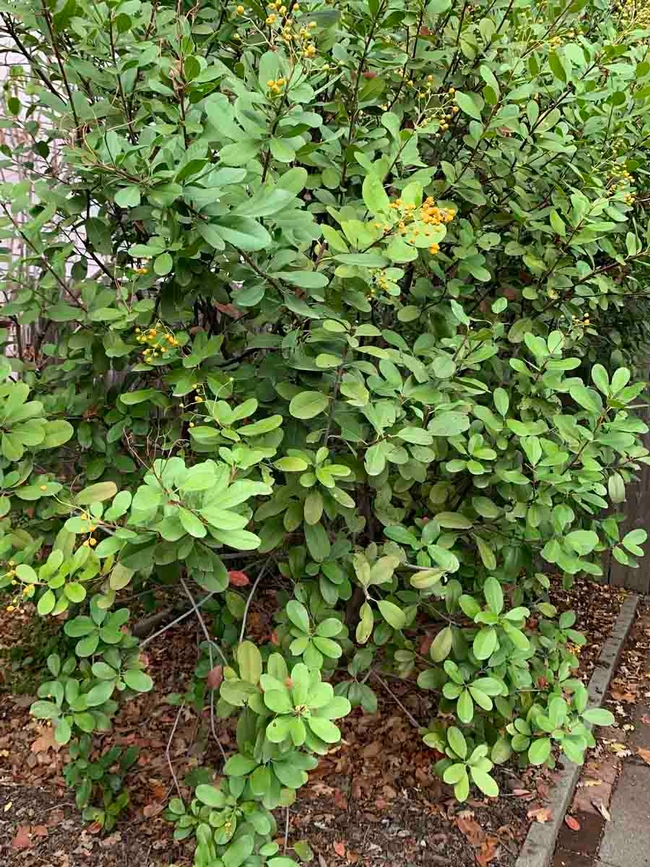Note: This is the second in a three-part series on native plants that have proven successful on the author's property along the Lindo Channel in Chico. The previous article discussed large trees; the final article in the series will cover smaller shrubs.
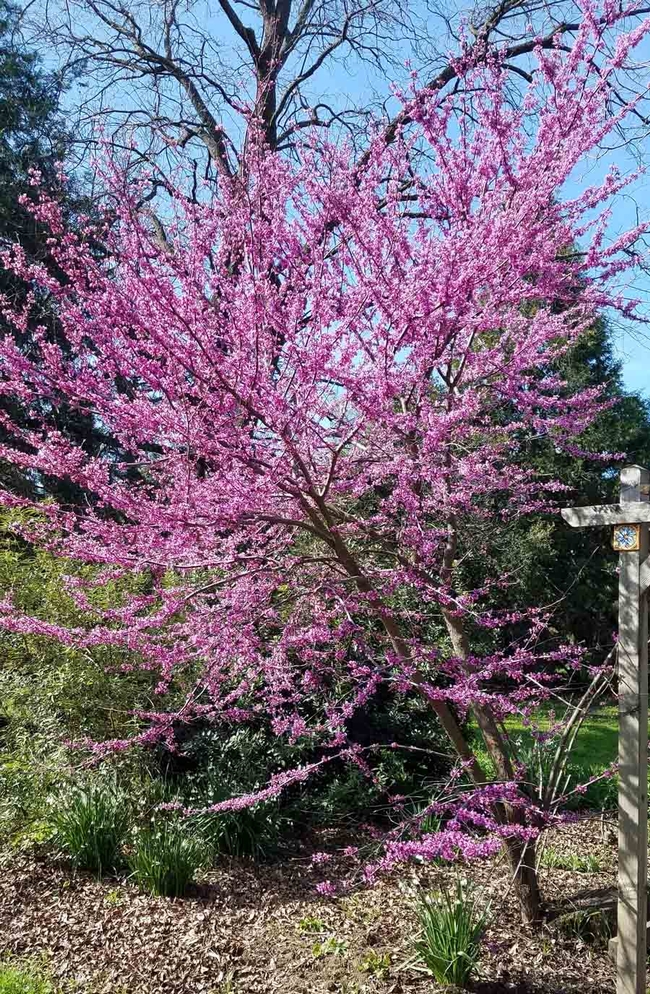
Western redbud (Cercis occidentalis) is native on dry slopes of the coast ranges and Sierra Nevada foothills to 4500 feet and eastward to Utah (usually situated next to a spring or seasonal creek). It is a deciduous, multi-trunked shrub or small tree with a long life span, growing two to three feet per year and reaching six to twenty feet over time. Magenta flowers appear in February to April before the leaves, and last for two to three weeks. The leaves are kidney-shaped and bluish-green; they can provide a lovely garden backdrop for summer-blooming plants, and turn yellow in fall. Reddish-purple seed pods hang from the branches in winter. The bushes are impressive in groups.
Western redbud likes full sun, and will grow faster if given some summer water. It will tolerate clay soils and soils with lime or acid (pH levels 5.5 to 8). It can provide good stabilization along a ridge or bank. The roots perform the useful role of fixing nitrogen. A good winter chill is necessary for good flower set. The flowers and young pods are edible; the plants will self-seed.
Western redbud attracts hummingbirds, goldfinches, butterflies, and bees (including leaf-cutter bees) to its flowers. It is deer resistant, and resistant to oak root fungus. While generally pest-free, Western redbud is susceptible to caterpillars and scales, and to crown and root rot.
California buckeye (Aesculus californica) is found in a variety of environments, including coastal sage scrub, mixed-evergreen forest, riparian (alongside rivers & creeks) and central oak woodland communities. It is a long-lived deciduous small tree, normally growing to 15 feet (occasionally up to 39 feet), with multiple trunks. Showy white six-inch scented flower spikes appear in April to May, after leafing.
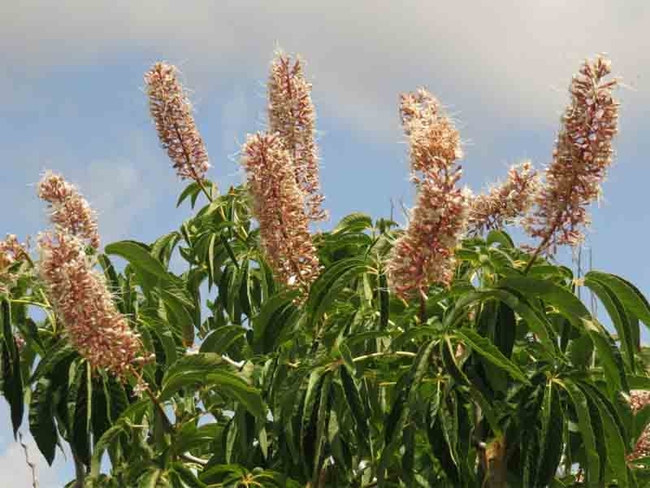
The nectar of the California buckeye attracts hummingbirds, native bees and butterflies.
California buckeye is poisonous to livestock, Asian honeybees, and fish. Its seeds are toxic unless processed. It is deer resistant.
Toyon (Heteromeles arbutifolia). Also known as Christmas berry, Toyon is native to much of California. It is a multi-stemmed evergreen shrub to small tree with white flowers in summer and red berries in winter. Toyon can grow quickly to six to eight feet high (sometimes reaching as high as 20 feet) and four to five feet wide. Toyon makes a good screen or specimen plant.
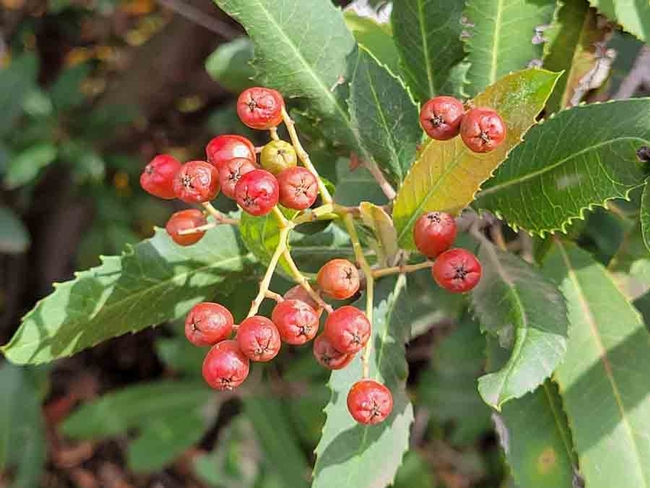
Toyon attracts a wide range of pollinator insects including native bees, pollinator flies, and butterflies. Winter fruit attracts cedar waxwings, towhees, finches, flickers, grosbeaks, bluebirds, robins, thrushes, mockingbirds, quail, tanagers, warblers and sparrows. Often the ripe berries ferment before they are eaten, so birds may get a little tipsy. Mammals, including coyotes and bears, also eat and disperse the berries.
Toyon is susceptible to fire blight and root rot if over-watered. Over time, it will become deer resistant.
California flannelbush (Fremontodendron californicum) is native to a number of California plant communities. This evergreen shrub grows quickly to five feet (and can eventually reach up to 20 feet). Showy yellow flowers, three inches across, appear in spring.
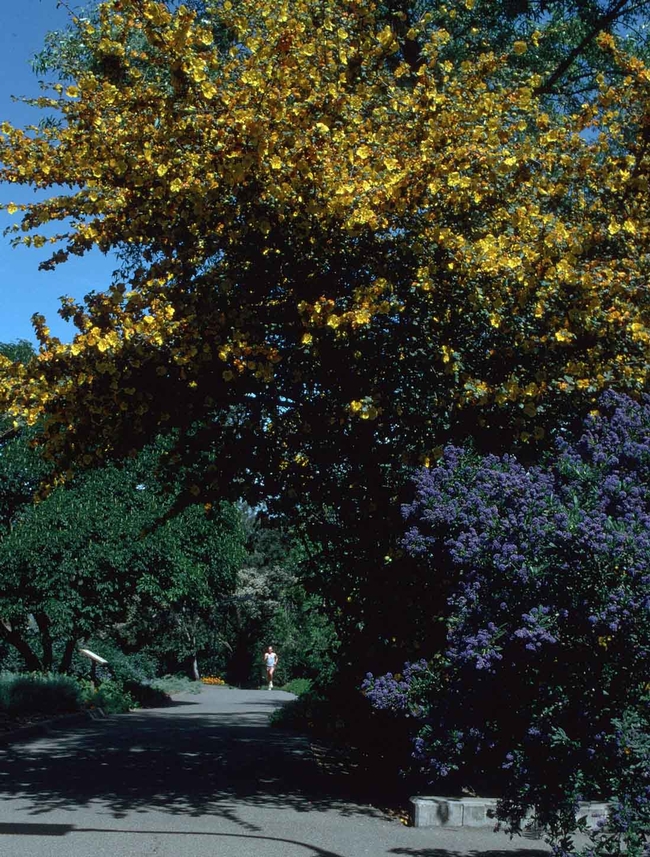
California flannelbush attracts bees and butterflies, has few pest problems, and is deer resistant.
UC Master Gardeners of Butte County are part of the University of California Cooperative Extension (UCCE) system. To learn more about us and our upcoming events, and for help with gardening in our area, visit our website. If you have a gardening question or problem, email the Hotline at mgbutte@ucanr.edu or leave a phone message on our Hotline at (530) 538-7201. To speak to a Master Gardener about a gardening issue, or to drop by the MG office during Hotline hours, see the most current information on our Ask Us Hotline webpage.
Attached Images:
